Restricted to a small range in the mountains this county’s bird is one of the most sought-after as well as most beautiful.
Meet the Gold-Ringed Tanager
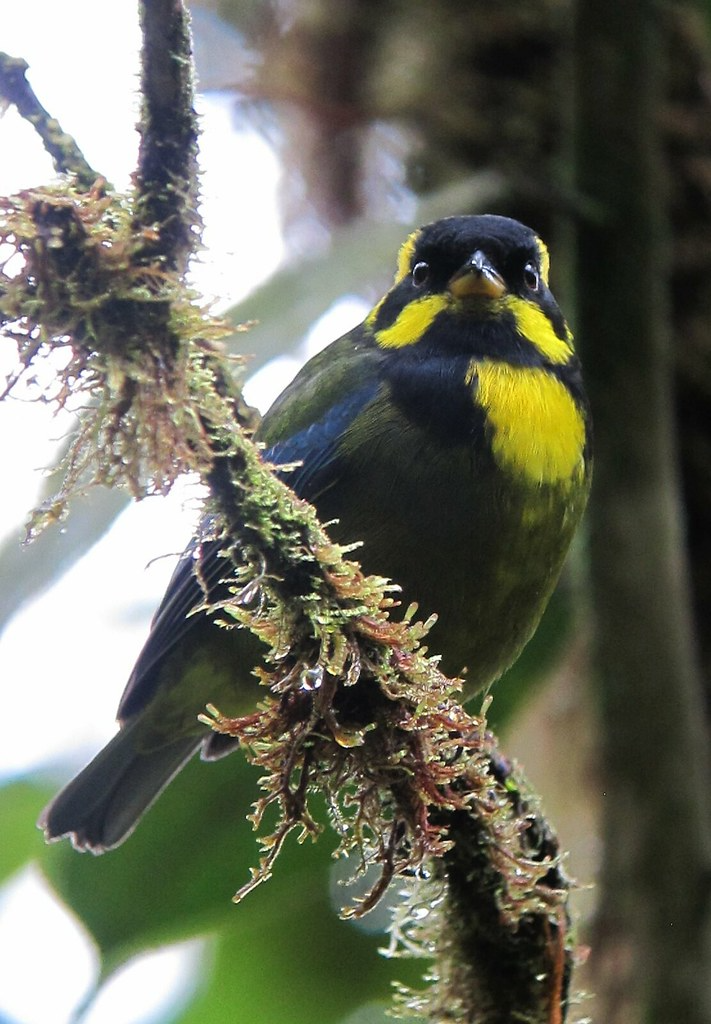
Photo Courtesy of felixú / CC BY-SA 2.0
The gold-ringed tanager (Bangsia aureocincta) a plump bird with a black head, and lower throat which extends down the sides of the breast black with a very visible yellow ring that frames the olive-yellow cheeks and ear coverts. There is also a splash of yellow in the middle of the breast tapering to olive green below. Upperparts are green, with the rump and upper tail coverts being paler, though more iridescent green. The wings are a dusky black with the wing coverts and secondary feathers being edged in blue. the eyes are dark red, the upper bill black, the lower mandible off-white, and the feet gray.
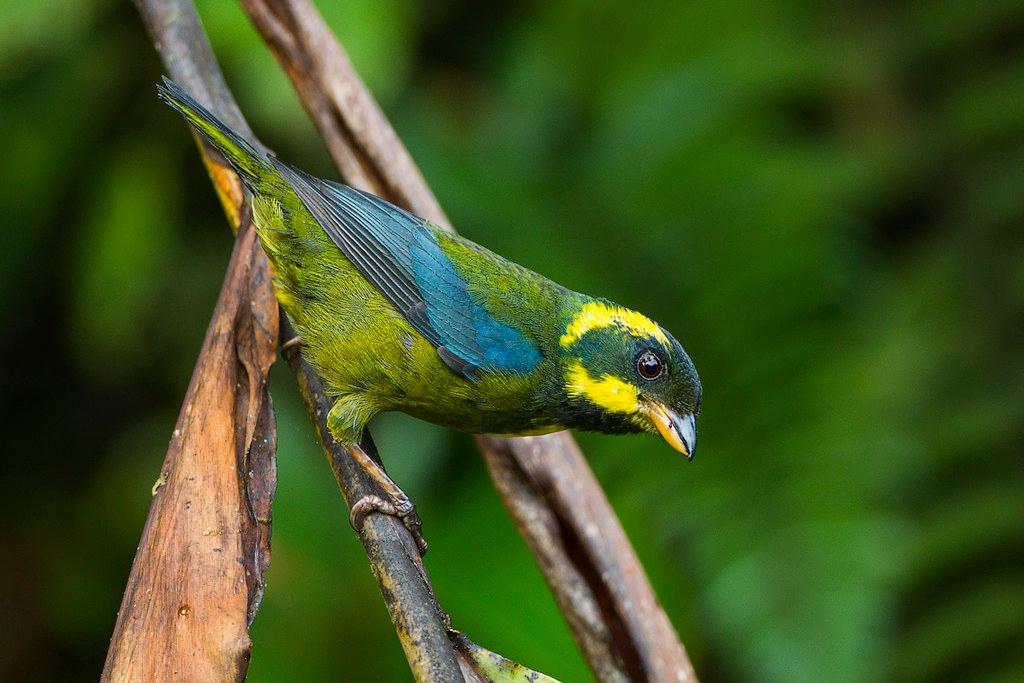
Photo Courtesy of fveronesi1 / CC BY-SA 2.0
Female birds look very similar to male birds with the main difference being the gold ring which is narrower and more a green yellow. The yellow on the breast is duller as are many of her other markings.
Only one juvenile bird has been described, with it being generally duller when compared to adults.
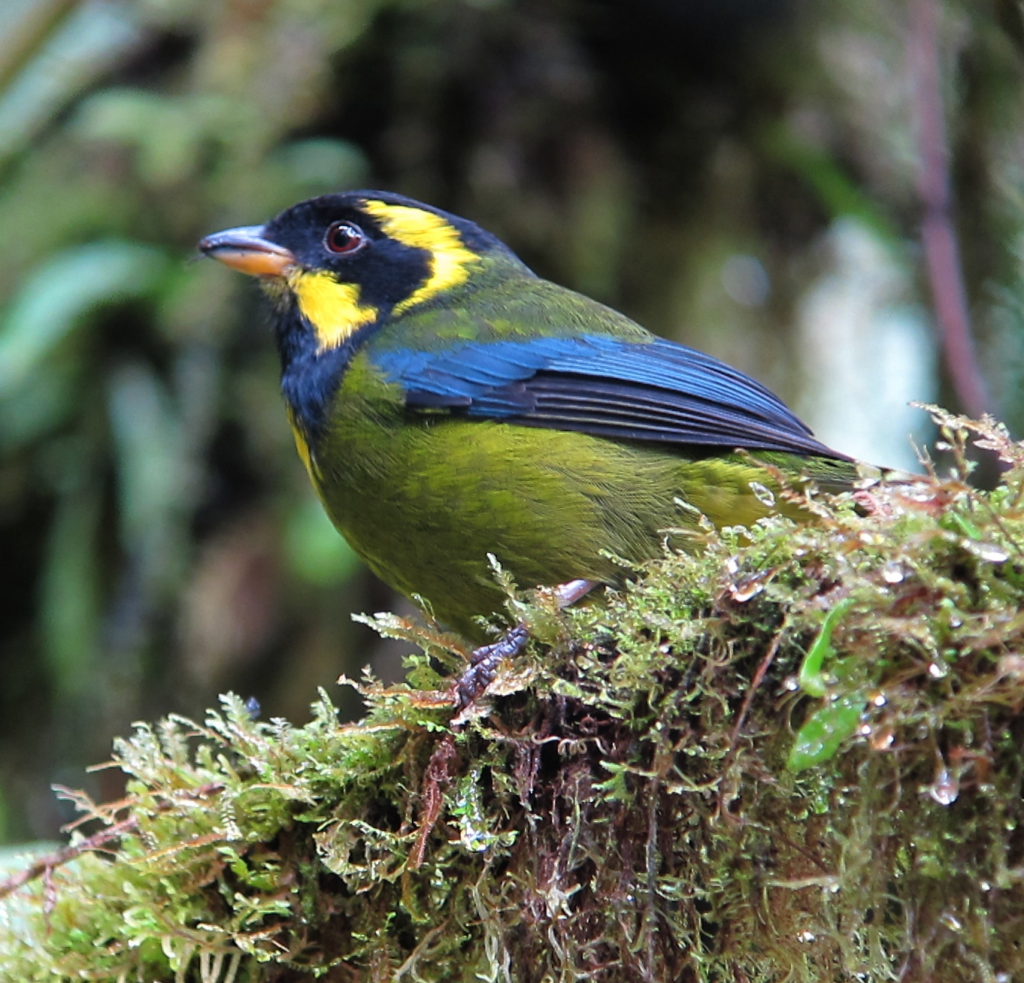
Photo Courtesy of Félix Uribe / CC BY-SA 2.0
This bird is endemic to a tiny area in Colombia.
View this post on Instagram
A post shared by Hardcore Birding (@hardcore_birding)
They inhabit a tiny area of the very wet, very humid, cloud forest on the Choco slopes between 1350 to 2195 meters
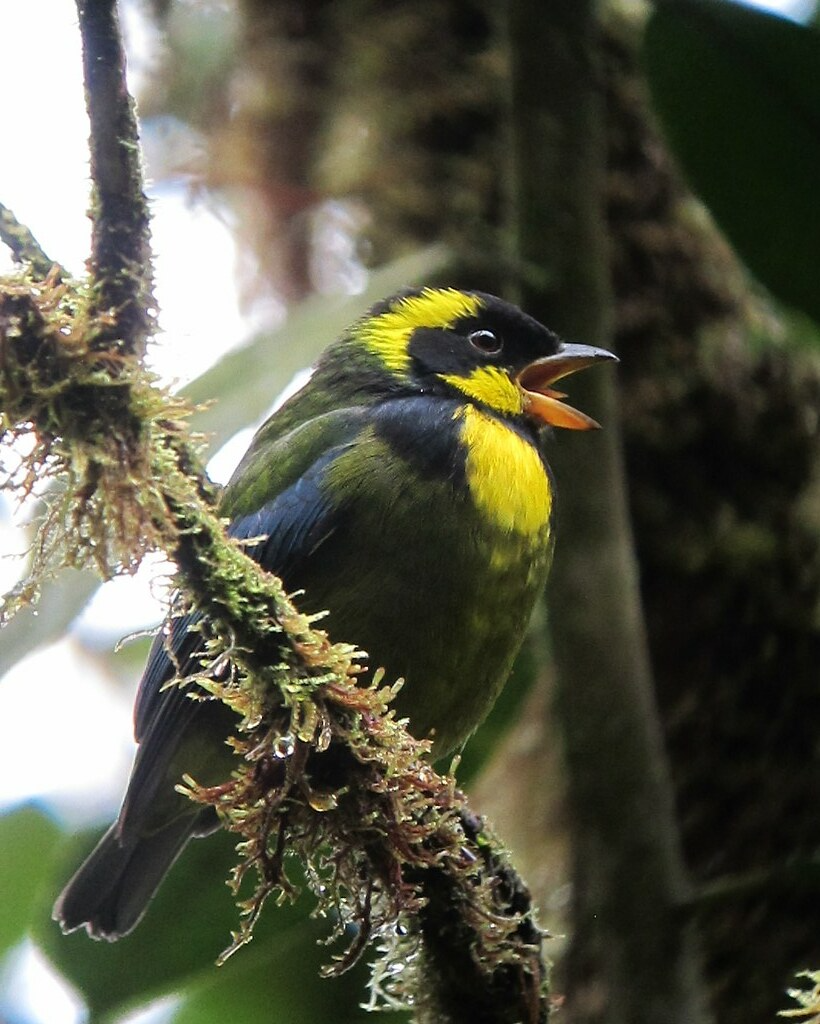
Photo Courtesy of Félix Uribe / CC BY-SA 2.0
Little is known about the diet of the Gold-ringed tanager, however, it does appear to eat fruit and insects.
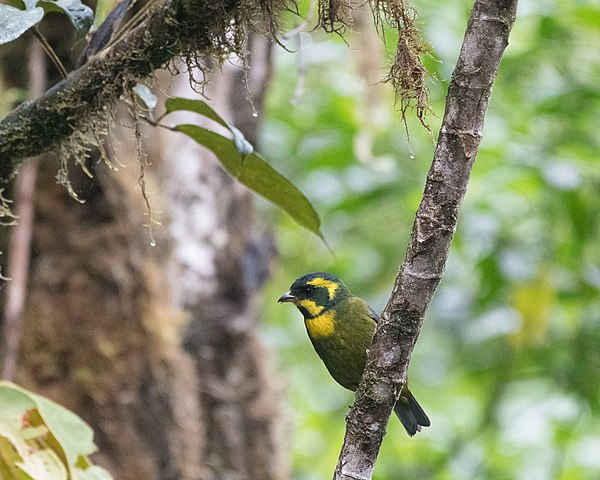
Photo Courtesy of Anthony Kaduck / CC BY-SA 4.0
Very little is known about the breed habits of this bird, though a dome-shaped nest has been observed around 2.3 meters above ground level made almost entirely of moss, with the interior lined with rootlets and thin fibers. It appears peak breeding may be between May and June with fledglings seen in July.
View this post on Instagram
A post shared by Montezuma Rainforest (@montezumarainforest)
This bird is regarded as Vulnerable on the IUCN Red List and the Colombian Red Book (Libro Rojo). Any species with such a limited range and such specific habitat requirements merit close attention, but this tanager does not seem to be experiencing a significant decline right now.
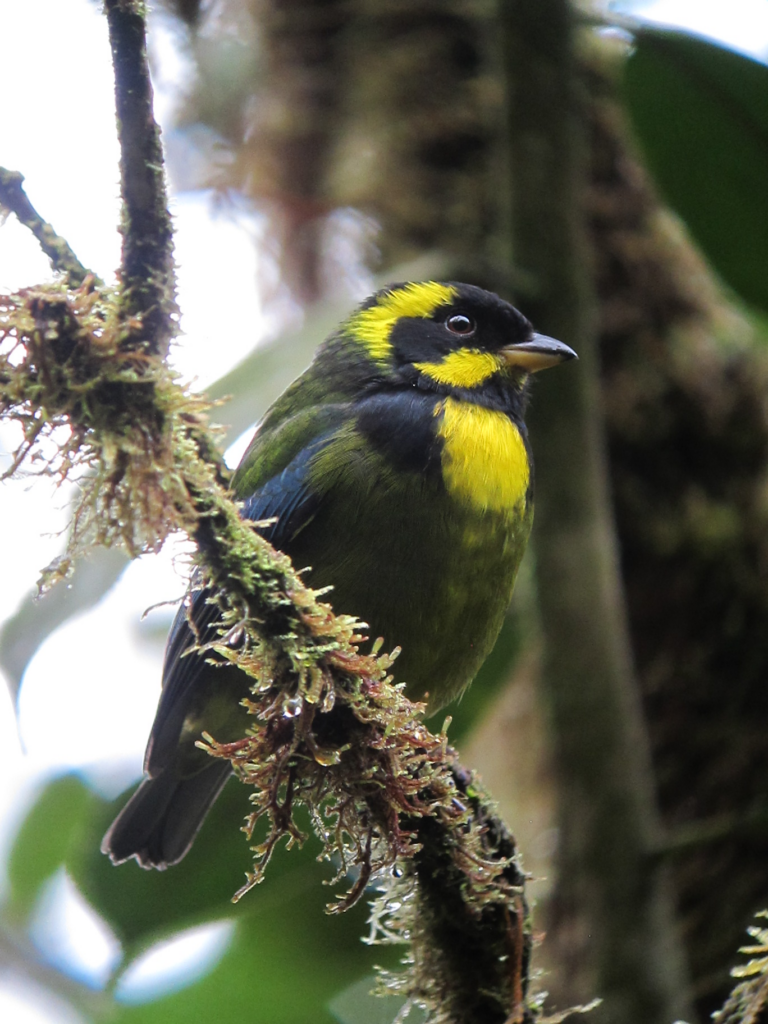
Photo Courtesy of Félix Uribe / CC BY-SA 2.0
You can watch and listen to this bird right here in the video below:




